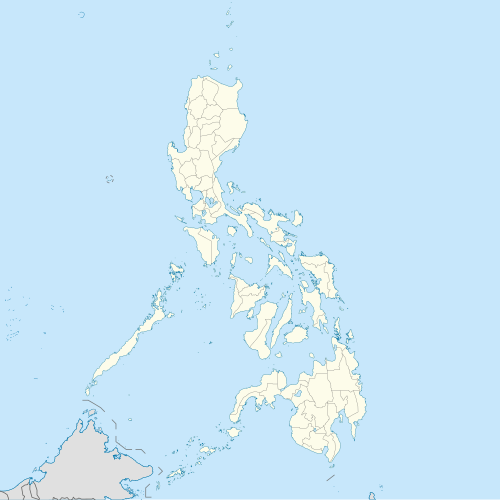| Year | Passenger movements | Aircraft movements | Cargo movements (in kg) |
|---|
| Domestic | International | Total | % change | Domestic | International | Total | % change | Domestic | International | Total | % change |
|---|
| 2001 | 937,751 | 13,306 | 951,057 |  | 12,730 | 468 | 13,198 |  | 39,406,667 | 6,844,067 | 46,250,734 |  |
|---|
| 2002 | 961,990 | 14,441 | 976,431 |  2.67 2.67 | 11,422 | 460 | 11,882 |  9.97 9.97 | 44,380,469 | 3,519 | 44,383,988 |  4.04 4.04 |
|---|
| 2003 | 742,436 | 13,185 | 755,621 |  22.61 22.61 | 8,968 | 480 | 9,448 |  20.48 20.48 | 30,779,223 | 1,654 | 30,780,877 |  30.65 30.65 |
|---|
| 2004 | 1,128,653 | 22,573 | 1,151,226 |  52.35 52.35 | 11,366 | 634 | 12,000 |  27.01 27.01 | 41,972,437 | — | 41,972,437 |  36.36 36.36 |
|---|
| 2005 | 1,322,064 | 24,971 | 1,347,035 |  17.01 17.01 | 11,968 | 718 | 12,686 |  5.72 5.72 | 70,372,167 | — | 70,372,167 |  67.66 67.66 |
|---|
| 2006 | 1,307,635 | 34,179 | 1,341,814 |  0.39 0.39 | 12,920 | 1,034 | 13,954 |  10.00 10.00 | 40,753,487 | — | 40,753,487 |  42.09 42.09 |
|---|
| 2007 | 1,502,600 | 52,622 | 1,555,222 |  15.90 15.90 | 13,778 | 1,126 | 14,904 |  6.81 6.81 | 45,516,843 | 15,455 | 45,532,298 |  11.73 11.73 |
|---|
| 2008 | 1,646,347 | 46,530 | 1,692,877 |  8.85 8.85 | 15,414 | 780 | 16,194 |  8.66 8.66 | 53,287,642 | 14,931 | 53,302,573 |  17.0 17.0 |
|---|
| 2009 | 1,935,454 | 32,496 | 1,967,950 |  16.25 16.25 | 9,316 | 283 | 9,599 |  40.72 40.72 | 34,172,210 | 84,429 | 34,256,639 |  35.73 35.73 |
|---|
| 2010 | 2,207,684 | 21,493 | 2,229,177 |  13.27 13.27 | 9,692 | 219 | 9,911 |  3.25 3.25 | 40,568,631 | 63,195 | 40,631,826 |  18.61 18.61 |
|---|
| 2011 | 2,364,972 | 25,167 | 2,390,139 |  7.22 7.22 | 10,238 | 239 | 10,477 |  5.71 5.71 | 34,772,206 | 51,771 | 34,823,977 |  14.29 14.29 |
|---|
| 2012 | 2,923,327 | 39,916 | 2,963,243 |  23.98 23.98 | 25,460 | 634 | 26,094 |  149.06 149.06 | 42,118,391 | 67,392 | 42,185,783 |  21.14 21.14 |
|---|
| 2013 | 2,773,691 | 33,538 | 2,807,229 |  5.26 5.26 | 29,104 | 536 | 29,640 |  13.59 13.59 | 49,757,177 | 71,841 | 49,829,018 |  18.12 18.12 |
|---|
| 2014 | 3,408,487 | 43,992 | 3,452,479 |  22.99 22.99 | 22,822 | 694 | 23,516 |  20.66 20.66 | 53,714,155 | 76,347 | 53,790,502 |  7.95 7.95 |
|---|
| 2015 | 4,099,131 | 50,974 | 4,150,105 |  20.21 20.21 | 26,058 | 758 | 26,816 |  14.03 14.03 | 59,737,244 | 77,062 | 59,814,306 |  11.20 11.20 |
|---|
| 2016 | 3,462,119 | 91,082 | 3,553,201 |  14.38 14.38 | 32,571 | 1,186 | 33,757 |  25.88 25.88 | 53,590,101 | 68,400 | 53,658,501 |  10.29 10.29 |
|---|
| 2017 | 4,140,757 | 93,910 | 4,234,667 |  19.18 19.18 | 36,094 | 2,399 | 38,493 |  14.03 14.03 | 57,594,657 | 159,342 | 57,753,999 |  7.63 7.63 |
|---|
| 2018 | 4,288,408 | 147,149 | 4,435,557 |  4.74 4.74 | 42,740 | 1,595 | 44,335 |  15.18 15.18 | 78,824,575 | 145,262 | 78,969,837 |  36.73 36.73 |
|---|
| 2019 | 4,303,903 | 186,183 | 4,490,086 |  1.23 1.23 | 42,281 | 1,759 | 44,040 |  0.67 0.67 | 66,767,439 | 181,762 | 66,949,201 |  15.22 15.22 |
|---|
| 2020 | 955,824 | 33,265 | 989,089 |  77.97 77.97 | 16,329 | 370 | 16,699 |  62.08 62.08 | 33,881,735 | 44,385 | 33,926,120 |  49.33 49.33 |
|---|
| 2021 | 561,889 | 12,015 | 573,904 |  41.98 41.98 | 6,177 | 123 | 6,300 |  62.27 62.27 | 30,089,418 | 470,035 | 30,559,453 |  9.92 9.92 |
|---|
| 2022 | 2,689,261 | 80,285 | 2,769,546 |  382.58 382.58 | 18,137 | 1,044 | 19,181 |  204.46 204.46 | 35,166,751 | 934,141 | 36,100,892 |  18.13 18.13 |
|---|
| 2023 | 3,714,825 | 130,070 | 3,844,895 |  38.82 38.82 | 23,675 | 1,318 | 24,993 |  30.30 30.30 | 44,989,027 | 205,746 | 45,194,773 |  25.19 25.19 |
|---|
An em dash (—) is used when data from CAAP is not available.
|











